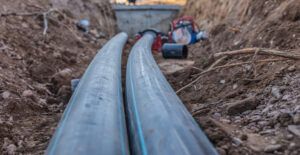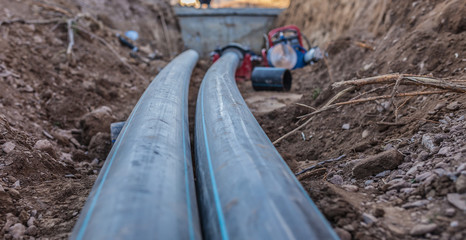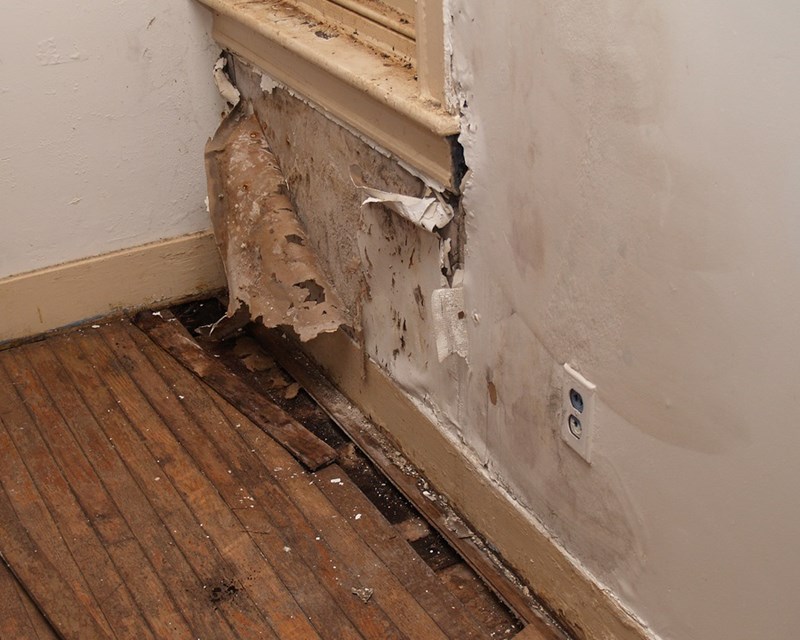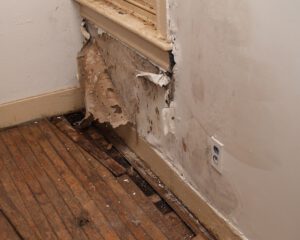Plumbing is the network of pipes, fixtures and appliances that deliver fresh water to homes and safely remove wastewater. It’s a vital technology for modern living that requires proper maintenance to function properly.
Though similar in appearance, plumbing and process piping serve different functions and fall under distinct regulations. Understanding these differences can help ensure both systems operate as intended. Visit Website to learn more.
Your home’s plumbing extends well beyond the pipes within your walls, and problems often start on the outside with the sewer line. If your line becomes damaged, you may experience sewage backups, structural damage to your property, and expensive repairs. The good news is that you can prevent a lot of these issues with regular inspections and maintenance by knowing the signs to look out for.
Slow Drains
If multiple drains in your home begin to take longer than usual to empty, it could indicate a problem with your sewer line. If regular methods like a plunger or drain cleaner are ineffective, it’s time to call in the professionals.
Sewage Backups
If sewage backs up into your toilets, it’s a clear sign that the main line has become blocked. This can be very dangerous and requires emergency action.
Odd Smells
Unusual smells from your sinks, toilets, and bathtubs can be a clear sign that the main line has been compromised. If you can’t pinpoint the source of the odor, it’s likely that your sewer line has become infiltrated by tree roots or has collapsed completely.
Unexplained Wet Spots
If you notice wet spots in your yard or house, it’s important to act quickly. This is because water infiltration from a damaged sewer line can quickly lead to mold and mildew. These fungi not only damage building materials but also have a negative impact on the health of your family.
Rodents
If your home’s interior or exterior appears to have more rodents than usual, it could be an indicator that there are issues with the sewer line. Rats and mice are known to make their way through cracked pipes and can cause serious damage. Their spores can also trigger asthma and allergies in children and adults.
The cause of sewer line damage can vary depending on the situation, but it typically starts with simple wear and tear. Over time, the line can deteriorate due to age and repeated exposure to harsh environmental conditions. Shifting soil can also affect the stability of lines, making them more susceptible to damage.
Sewer Line Replacement
The time it takes to replace a sewer line can vary widely. A replacement is a big project that can disrupt daily activities, and it’s important for homeowners to understand how long the process will last so they can plan accordingly. This knowledge will help them determine whether they need temporary accommodations and/or alternative arrangements, and it will give them an idea of when the work will be completed so they can resume normal activities without worrying about sewage leaks and other issues.
Sewer lines are designed to carry wastewater and other waste materials away from your home and into the municipal sewer system. But if the line is cracked, damaged or otherwise malfunctioning, it can lead to expensive and messy problems. If you suspect your sewer line is in need of repair or replacement, a qualified professional can perform a sewer camera inspection to find the cause of the issue and recommend an appropriate solution.
Persistent blockages may indicate that the underlying problem is beyond repair, and replacing the entire line is the best option. The same is true for severe damage that results in extensive cracks, deterioration or collapse. In addition, replacing the line can allow you to upgrade to a more durable pipe material that will provide better functionality and reliability for years to come.
While it is possible for DIYers to perform sewer line replacements, this is a project that requires specialized knowledge and equipment. It also involves excavation and precise measurements, so any mistakes can have costly consequences. Additionally, working on sewer lines exposes you to raw sewage, which can pose health risks if not handled properly. Professionals are well-versed in proper safety measures and regulatory compliance, and they can handle the entire process from start to finish.
If you’re in need of a new sewer line, consider working with a plumber who uses trenchless replacement methods. These less invasive techniques enable them to remove the old pipe and insert a new one without digging up your yard. In some cases, such as with a pipe lining, they can even replace the line from inside your existing pipes.
Sewer Line Repair
If your home is suffering from frequent sewer line backups and other issues, it’s time to call in professional help. Fortunately, there are multiple solutions for fixing and replacing sewer lines to restore efficient wastewater flow.
Traditional sewer repair involves digging up the affected area to access the broken pipes for inspection and repair. This method has been the industry standard for decades, but it can be costly and disruptive to your daily routines. It also allows for a full view of the entire issue to ensure a comprehensive solution, but it’s not without risk.
Damaged pipes can occur for a number of reasons, including:
Root Infiltration: Tree roots are notorious for infiltrating cracked or damaged sewer lines, creating significant blockages and serious damage. Aging Pipes: Over time, pipes made of less-durable materials like Orangeburg or clay can corrode, break down, and collapse, leading to costly replacements. Ground Movement: Shifting soil and heavy construction nearby can crack or displace sewer lines.
Even with proper care, your sewer system will likely need repairs and replacements at some point. Recognizing the signs of a failing sewer line early can save you from expensive repairs and prevent future problems.
Sewer line repair can be as simple as a drain cleaning, or as complicated as a complete pipe replacement. The first step in any sewer line repair is diagnosis, and your plumber will use a camera to check the condition of your pipes and identify the cause of the problem. Once the location of the damage is determined, your plumber will recommend a repair option that’s right for you.
If your pipes aren’t quite ready for replacement, there are a variety of trenchless sewer line repair methods available. One popular choice is called sewer pipe lining, wherein your plumber inserts a flexible tube filled with resin into your existing pipe. Then, the resin hardens, forming a new pipe within your old one that can last for decades without further repair or replacement. This method is also used to correct a sewer line belly, which occurs when a section of the underground pipe dips and traps solid debris.
Sewer Line Installation
If your home’s sewer line is old, damaged, or clogged, it’s time for new installation. Incorrectly functioning lines are dangerous and can lead to expensive repairs and sewage backups, so it’s best to replace them before they cause significant problems. The first step in the process is a video inspection of your existing lines to identify the issue and determine the proper course of action.
Once the inspector determines the best route for the new line, the excavation phase begins. This must be handled carefully to avoid damaging the surrounding environment and must take into account factors like soil type, water levels, and proximity to other buried utility lines.
The crew digs a trench along the desired path of the pipe, then places a layer of fine bedding material—typically sand or gravel—into it to prevent damage to the pipes. The pipes are then lowered into the trench and connected to each other and the city’s main line. Care is taken to ensure that the slope of the line is correct, so wastewater flows downhill and doesn’t clog your home’s drains. Finally, the trench is backfilled and compacted to preserve the site as much as possible and prevent future sinking and settling issues.
Before any digging can start, the crew must contact local utilities to have their lines marked. This helps prevent workers from accidentally hitting and disrupting electrical, gas, or water services, which can be very dangerous for everyone involved. Once the new lines are in place, they must be inspected to make sure they meet all regulatory standards and function as intended.
A properly working sewer line transports waste and sewage to the city main, protecting homes and businesses from blockages, odors, and environmental contamination. Understanding the basics of sewer line installation is helpful for homeowners who need to repair or replace their own pipes. If you have any questions, be sure to speak with a professional plumber to get all the answers you need!


